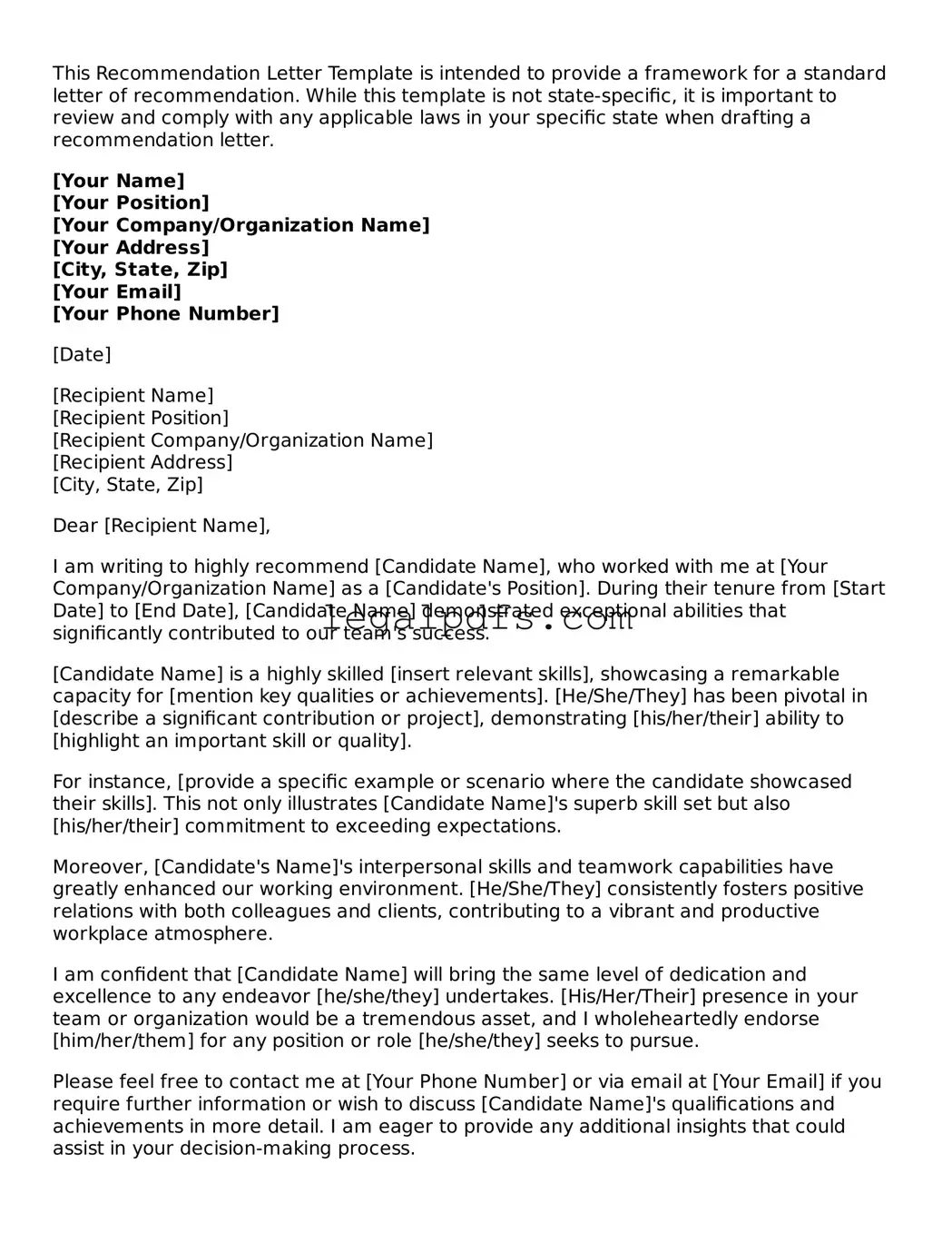This Recommendation Letter Template is intended to provide a framework for a standard letter of recommendation. While this template is not state-specific, it is important to review and comply with any applicable laws in your specific state when drafting a recommendation letter.
[Your Name]
[Your Position]
[Your Company/Organization Name]
[Your Address]
[City, State, Zip]
[Your Email]
[Your Phone Number]
[Date]
[Recipient Name]
[Recipient Position]
[Recipient Company/Organization Name]
[Recipient Address]
[City, State, Zip]
Dear [Recipient Name],
I am writing to highly recommend [Candidate Name], who worked with me at [Your Company/Organization Name] as a [Candidate's Position]. During their tenure from [Start Date] to [End Date], [Candidate Name] demonstrated exceptional abilities that significantly contributed to our team's success.
[Candidate Name] is a highly skilled [insert relevant skills], showcasing a remarkable capacity for [mention key qualities or achievements]. [He/She/They] has been pivotal in [describe a significant contribution or project], demonstrating [his/her/their] ability to [highlight an important skill or quality].
For instance, [provide a specific example or scenario where the candidate showcased their skills]. This not only illustrates [Candidate Name]'s superb skill set but also [his/her/their] commitment to exceeding expectations.
Moreover, [Candidate's Name]'s interpersonal skills and teamwork capabilities have greatly enhanced our working environment. [He/She/They] consistently fosters positive relations with both colleagues and clients, contributing to a vibrant and productive workplace atmosphere.
I am confident that [Candidate Name] will bring the same level of dedication and excellence to any endeavor [he/she/they] undertakes. [His/Her/Their] presence in your team or organization would be a tremendous asset, and I wholeheartedly endorse [him/her/them] for any position or role [he/she/they] seeks to pursue.
Please feel free to contact me at [Your Phone Number] or via email at [Your Email] if you require further information or wish to discuss [Candidate Name]'s qualifications and achievements in more detail. I am eager to provide any additional insights that could assist in your decision-making process.
Sincerely,
[Your Name]
[Your Position]
[Your Company/Organization Name]
